MAcroalgae Biology
Macroalgae are aquatic, plant-like, organisms that produces energy and oxygen through photosynthesis of sunlight, CO2 and H2O. Marine algae are the largest producer of oxygen on earth and they can be divided into micro- and macroalgae. Microalgae are microscopic, unicellular plankton that either exists as single cells or as chained individuals, whereas macroalgae are lager, multicellular organisms that are often anchored to a substrate on the ocean floor.
Macroalgae have several vital functions for life in the ocean. Tangle (Laminaria latissimin) and sugar kelp (Saccharina latissimi) among other species can creates large underwater forests, providing a home to a vast of marine species and a sheltered spawning ground for fish and shellfish. The forest is also used as grazing and hideouts for marine mammals, fish, and birds.
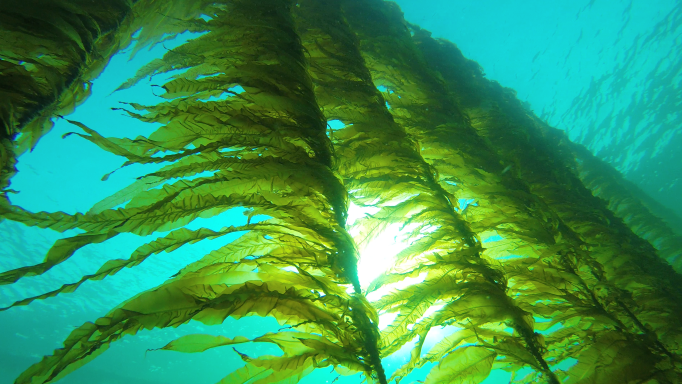
In general, macroalgae have a high nutrition demand, an efficient growth, and thrive in waters with high currents. Most species therefore need to be anchored onto a solid substrate with a rot-like structure called a holdfast. Different species have physical properties that are specialized to their preferred habitat, which can be from the intertidal zone to 30-40 meters down below the ocean surface. Species growing in the intertidal zone, like rockweed, can handle shorter dry periods.
Macroalgae structures
Thallus/Frond: The body of the plant
Air bladder: Hollow, gas filed structures holding the plant afloat towards the surface.
Stipe: A stem-like structure
Holdfast: A rot-like structure which anchors the plant to the surface
Haptera: Finger-like structures on the holdfast
Sorus/sori: Spore-producing area of the frond thallus
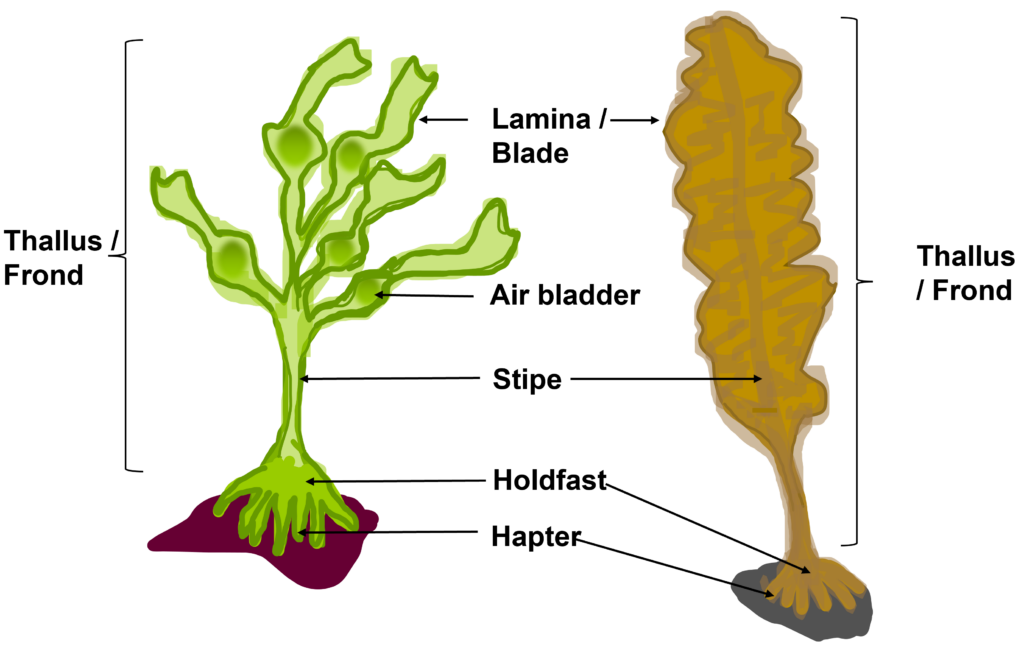
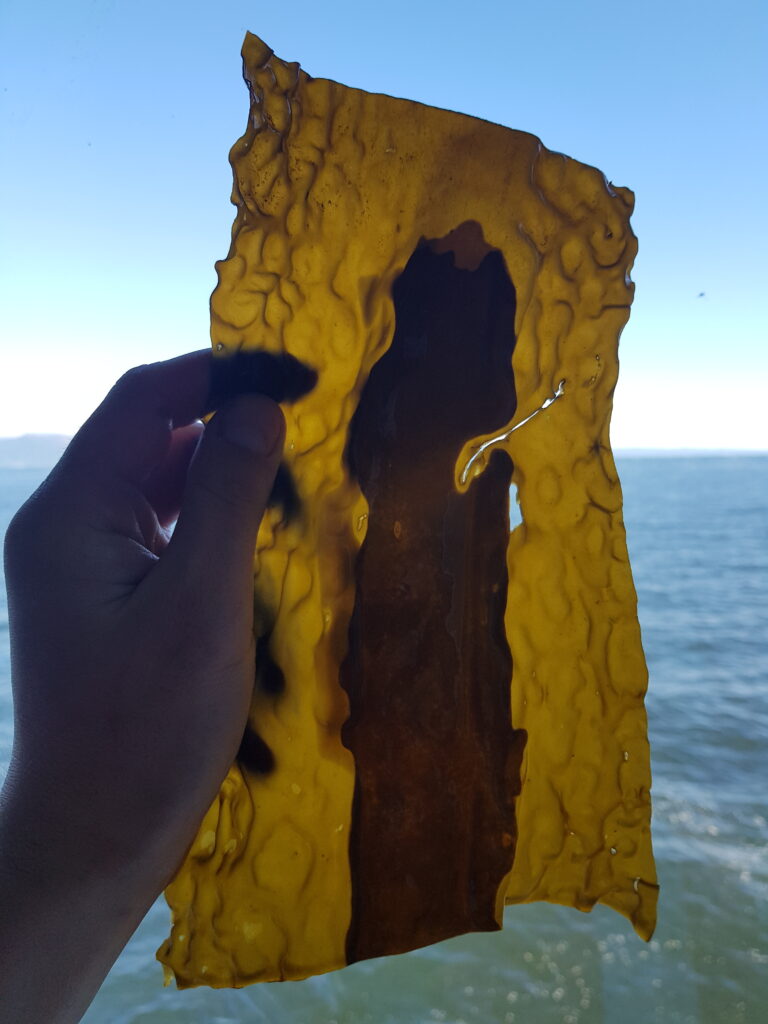
Sugar kelp thallus with sorus (dark area)
Reproduction
The life cycle of macroalgae can vary greatly between species. Some have perennial life cycles, living for many years, while other have annuals life cycles. Reproduction is often complicated and can be exclusively sexual or asexual, or alternate between generations.
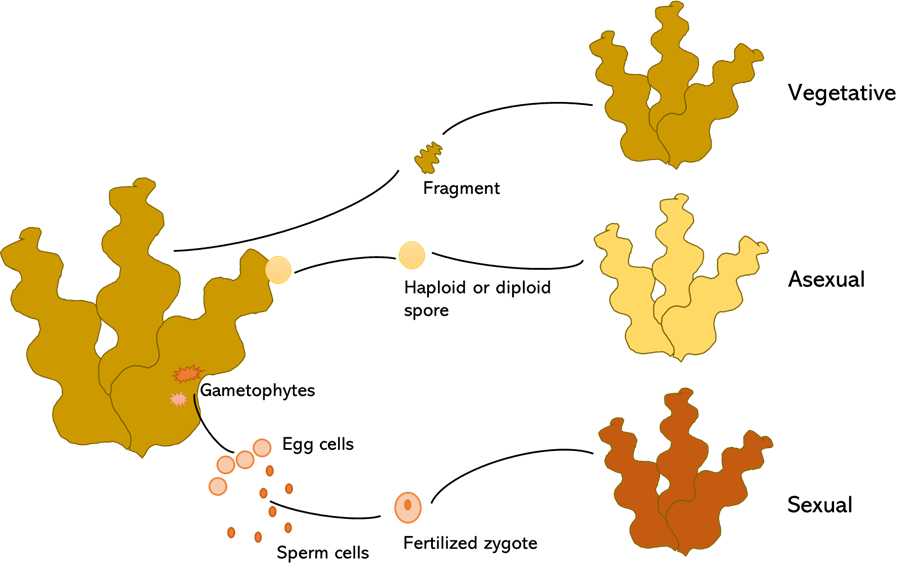
- Vegetative/Fragmentation reproduction: A form of asexual reproduction where the algae disperse into smaller fragments and each fragment can grow into a new algae plant with completely identical genetical material as the parent plant.
- Asexual reproduction: The algae create spores that sprouts into new algae. The spore formation can be done by meiosis or mitosis. With meiosis the diploid spore (two sets of chromosomes) forms a genetically identical offspring. With mitosis the haploid spore (one set of chromosomes) forms an offspring with only one half of the genetical material from the parent plant.
- Sexual reproduction: Formation of female and male gametes from a sporophyte, settling into male and female gametophytes. The gametophytes produce gametes (sperm- and egg cells) that form a diploid zygote that sprouts into new plant.
Brown algae
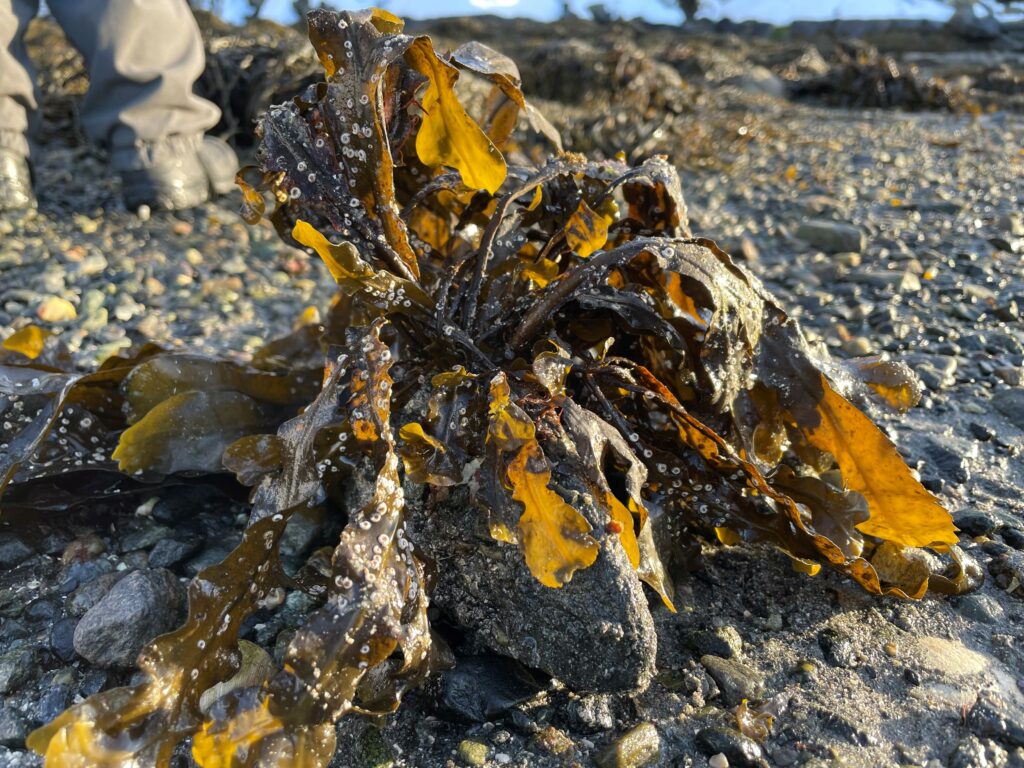
Brown algae are mainly marine species that are found in colder waters in the northern and southern hemisphere. They produce a pigment called fuoxanthin which gives the characteristic brownish color. Brown algae only exist as macroalgae and are often found in the intertidal zone and deeper waters.
- Phylum: Ochrophyta
- Class: Phaeophyceae
- Pigment: Chlorophyll c1 + c2 and fucoxanthin
- Color: Dark brown to olive green
- Habitat: 99 % are marine species and 1% freshwater species. Thrives in colder water
- Species: About 1500
Bladderwrack
Red algae
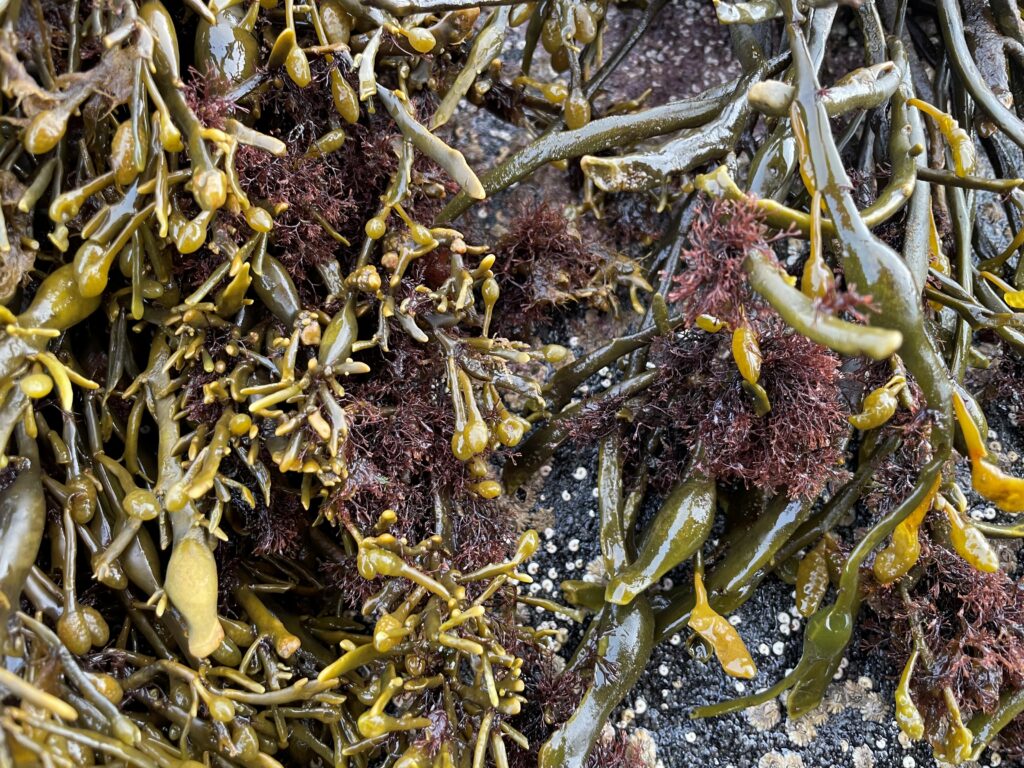
Polysiphonia lanosa (red algae) growing on Ascophyllum nodosum (brown algae)
Red algae are mainly marine species, but some are specialized to freshwater. They are mainly fond in tropical waters and only a limited number of species thrive in colder water. Red algae are often small in size and compared to other algae groups they grown deep, with some as far down as 250 meters. Some are epiphytes, like Tangle, which are organisms that grow on the surface of other plants. There are also several unicellular species, where some of them can combine into a colony and grow to tremendous size. They produce the pigment phycoerythrin that give the characteristic red color.
- Phylum: Rhodophyta
- Class: Rhodophyceae
- Pigment: Phycoerythrin and phycocyanin
- Color: Pink to brown/red
- Habitat: 90 % in seawater and 10 % in fresh water. Mainly in tropical waters
- Species: About 4000
green algae
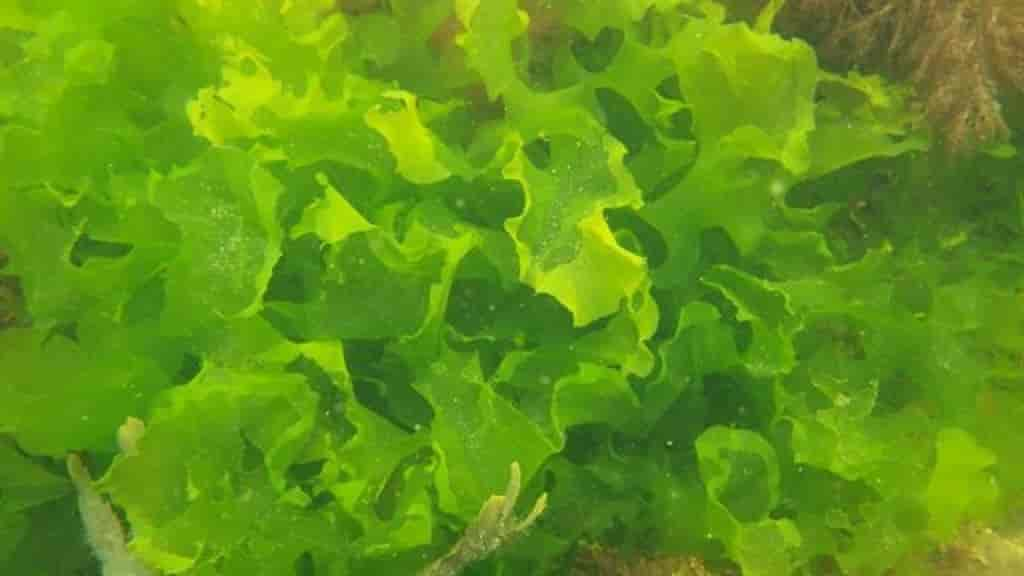
Ulva lactuca
Green algae are mainly found in freshwater and thrive in both tropical and colder water. Several species have the ability to withstand large variation in pH, salinity, temperature and dry periods. They grow on sand and mud bottom, but also on rocks and free in the water. Produces only the pigments chlorophyll a and b, and are therefore colored green. The difference species can be unicellular, chained in a colony or multicellular. Green algae are often pioneer species, meaning they are some of the first species to appear in areas with little vegetation.
- Phylum: Chlorophyta
- Class: Chlorophyceae
- Pigment: Chlorophyll b
- Color: Green
- Habitat: 90 % in seawater and 10 % in fresh water. Thrive in temperate waters
- Species: About 16 000